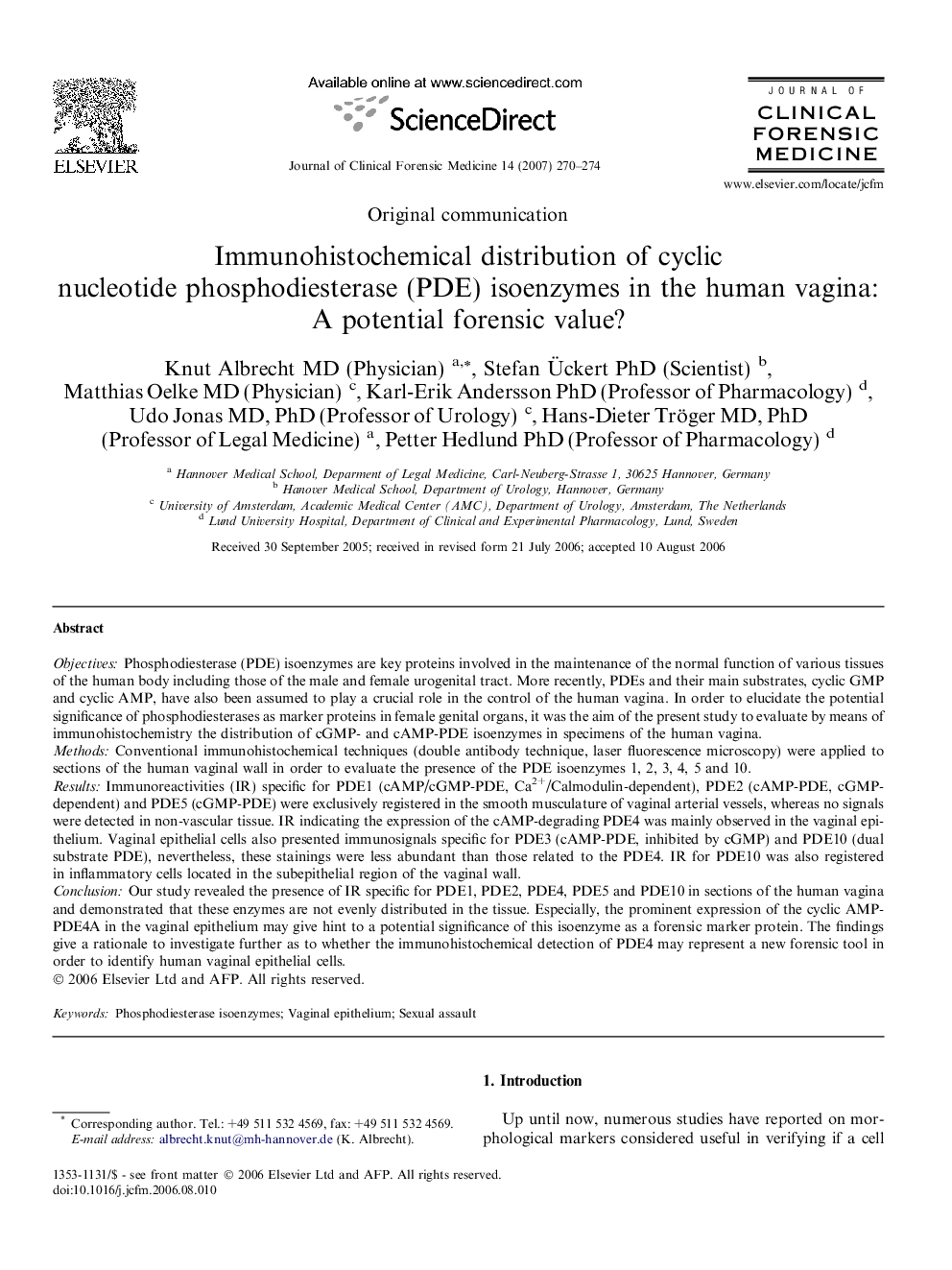| Article ID | Journal | Published Year | Pages | File Type |
|---|---|---|---|---|
| 102940 | Journal of Forensic and Legal Medicine | 2007 | 5 Pages |
ObjectivesPhosphodiesterase (PDE) isoenzymes are key proteins involved in the maintenance of the normal function of various tissues of the human body including those of the male and female urogenital tract. More recently, PDEs and their main substrates, cyclic GMP and cyclic AMP, have also been assumed to play a crucial role in the control of the human vagina. In order to elucidate the potential significance of phosphodiesterases as marker proteins in female genital organs, it was the aim of the present study to evaluate by means of immunohistochemistry the distribution of cGMP- and cAMP-PDE isoenzymes in specimens of the human vagina.MethodsConventional immunohistochemical techniques (double antibody technique, laser fluorescence microscopy) were applied to sections of the human vaginal wall in order to evaluate the presence of the PDE isoenzymes 1, 2, 3, 4, 5 and 10.ResultsImmunoreactivities (IR) specific for PDE1 (cAMP/cGMP-PDE, Ca2+/Calmodulin-dependent), PDE2 (cAMP-PDE, cGMP-dependent) and PDE5 (cGMP-PDE) were exclusively registered in the smooth musculature of vaginal arterial vessels, whereas no signals were detected in non-vascular tissue. IR indicating the expression of the cAMP-degrading PDE4 was mainly observed in the vaginal epithelium. Vaginal epithelial cells also presented immunosignals specific for PDE3 (cAMP-PDE, inhibited by cGMP) and PDE10 (dual substrate PDE), nevertheless, these stainings were less abundant than those related to the PDE4. IR for PDE10 was also registered in inflammatory cells located in the subepithelial region of the vaginal wall.ConclusionOur study revealed the presence of IR specific for PDE1, PDE2, PDE4, PDE5 and PDE10 in sections of the human vagina and demonstrated that these enzymes are not evenly distributed in the tissue. Especially, the prominent expression of the cyclic AMP-PDE4A in the vaginal epithelium may give hint to a potential significance of this isoenzyme as a forensic marker protein. The findings give a rationale to investigate further as to whether the immunohistochemical detection of PDE4 may represent a new forensic tool in order to identify human vaginal epithelial cells.
